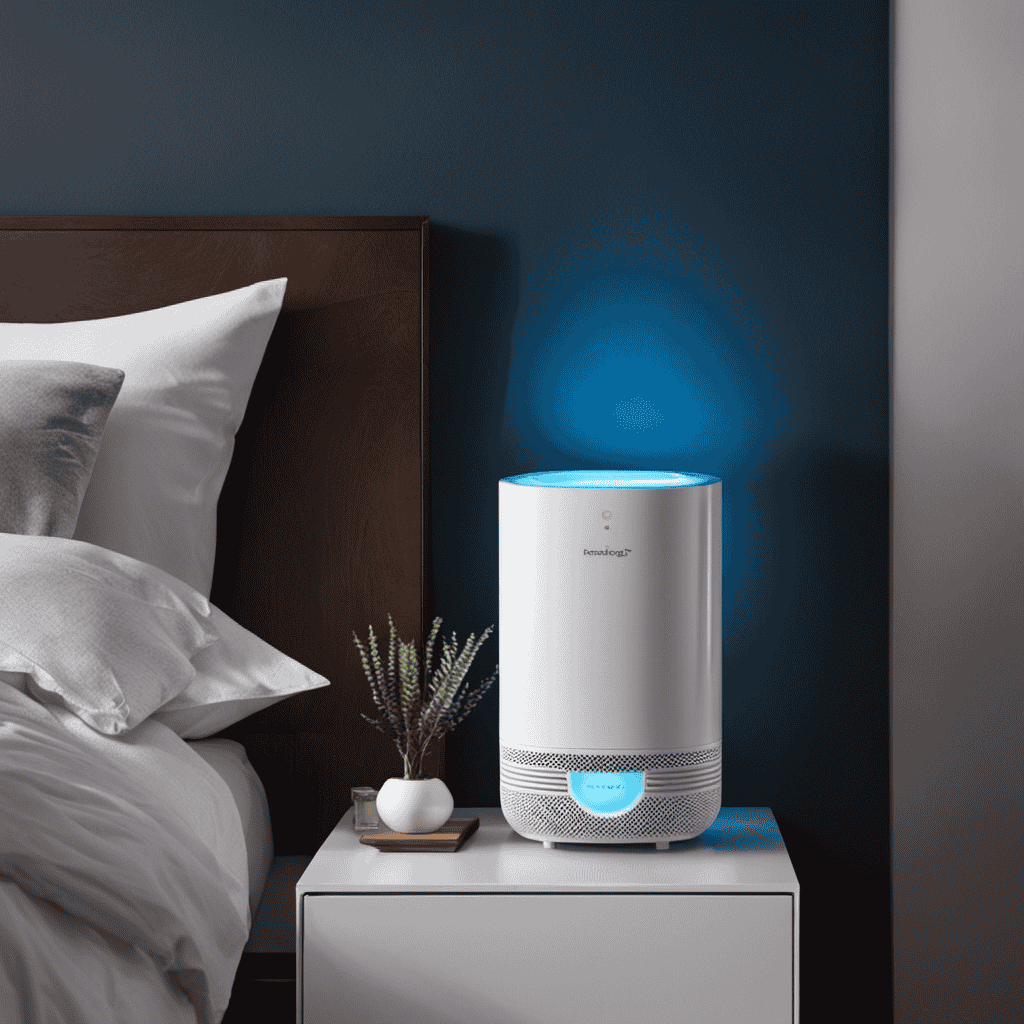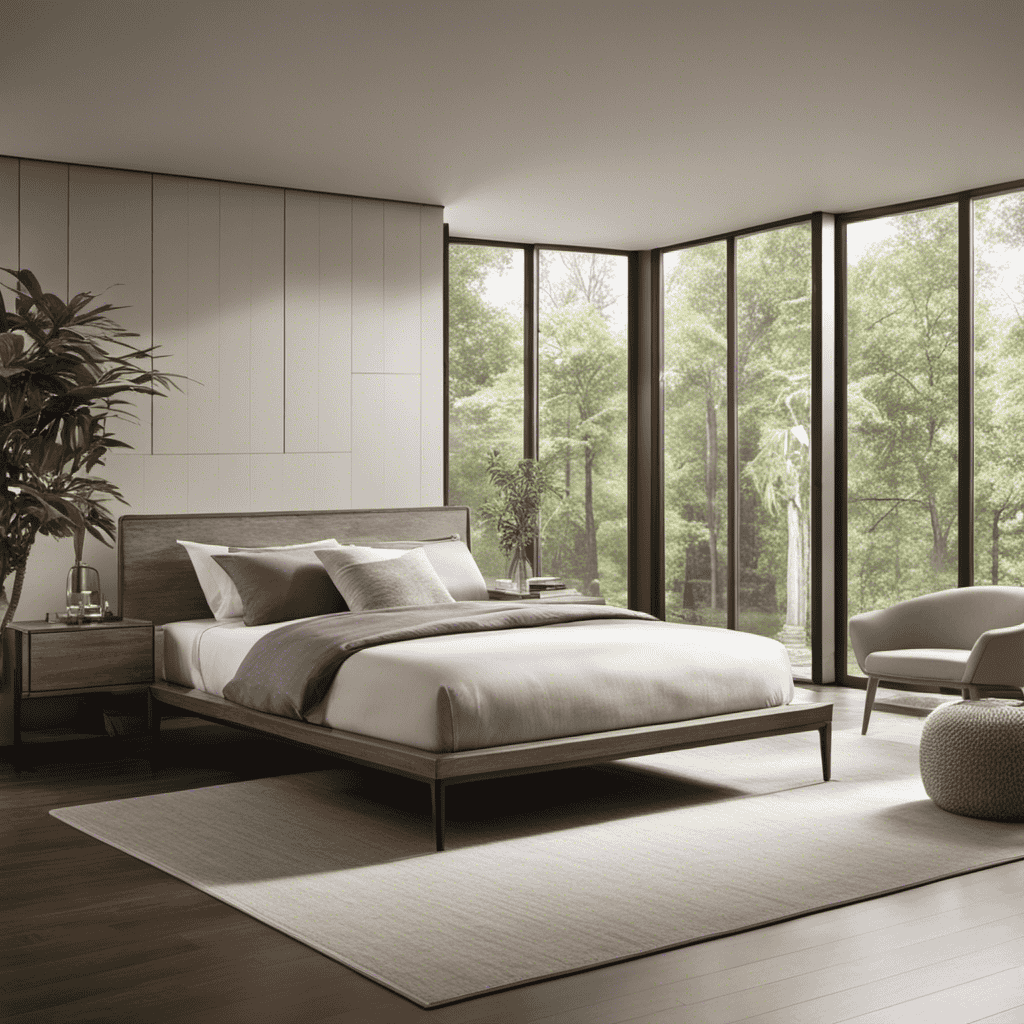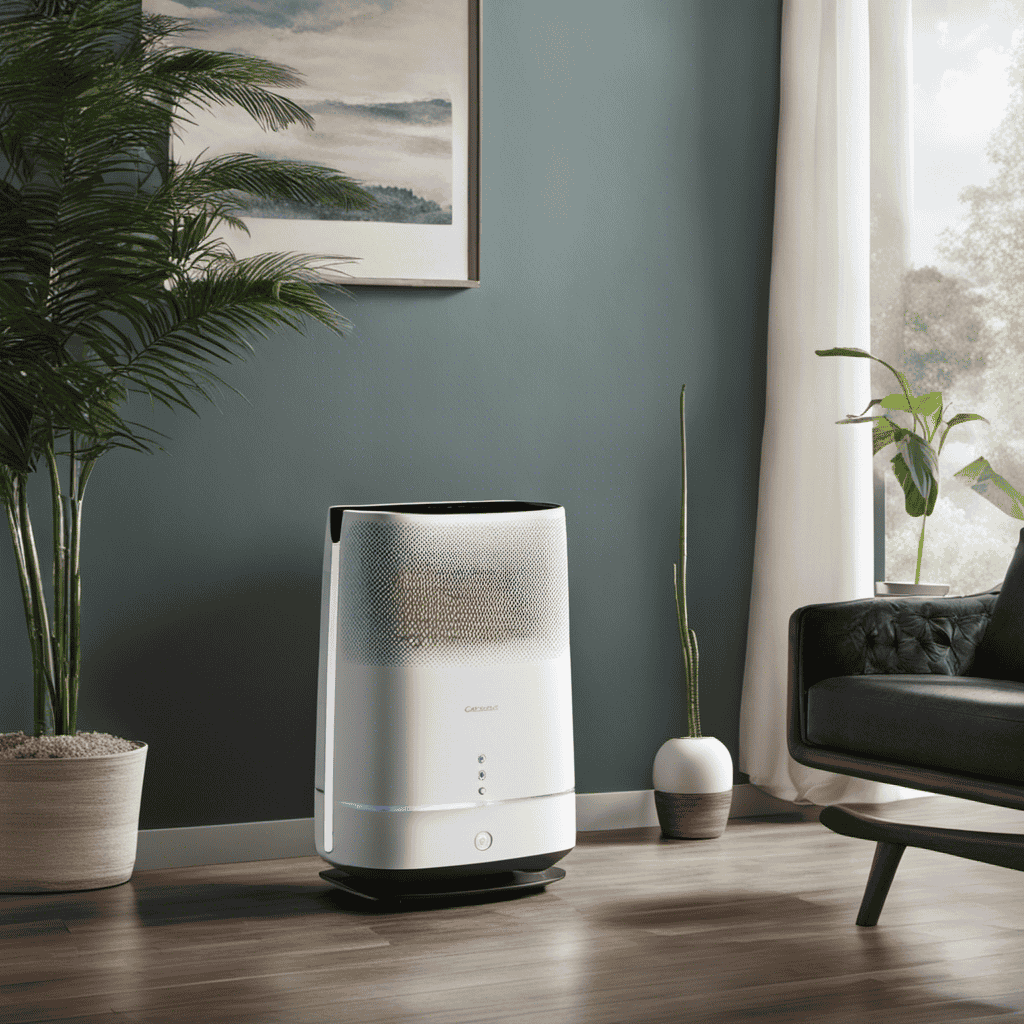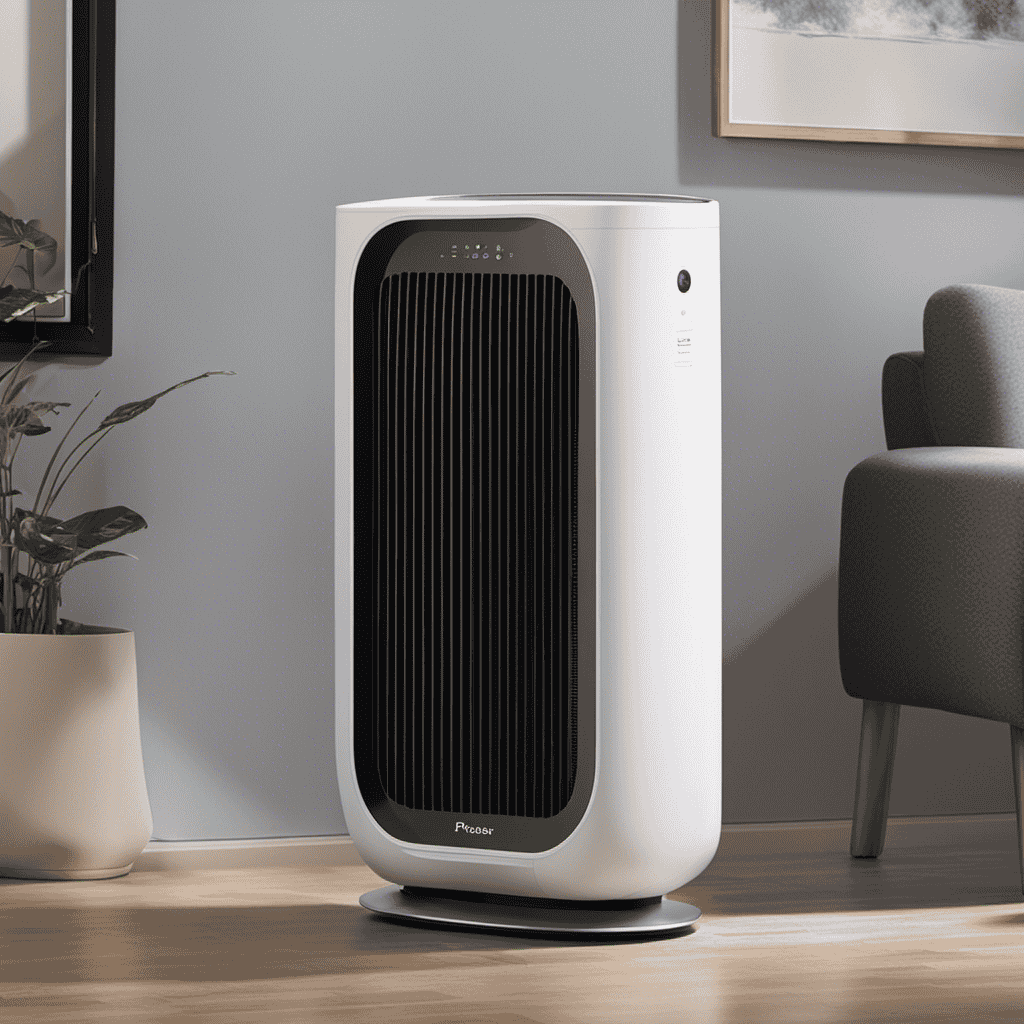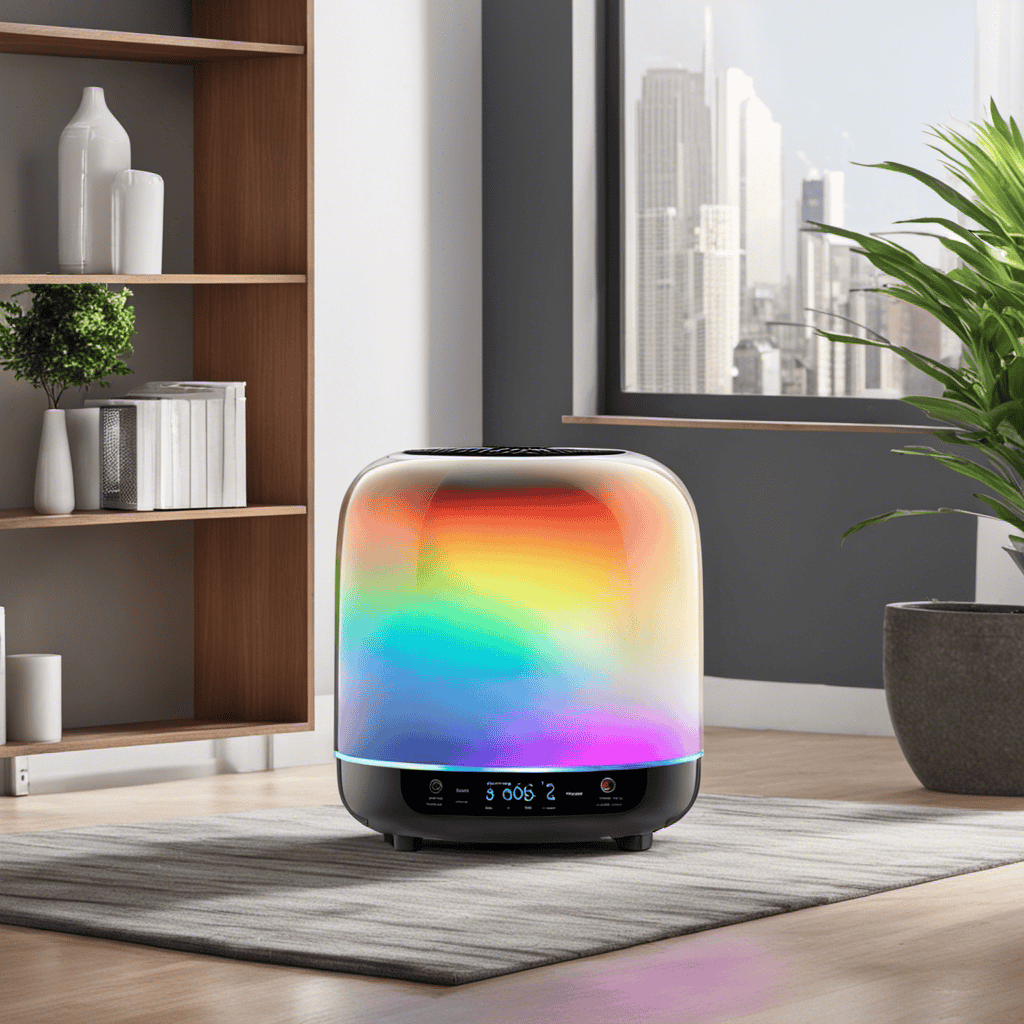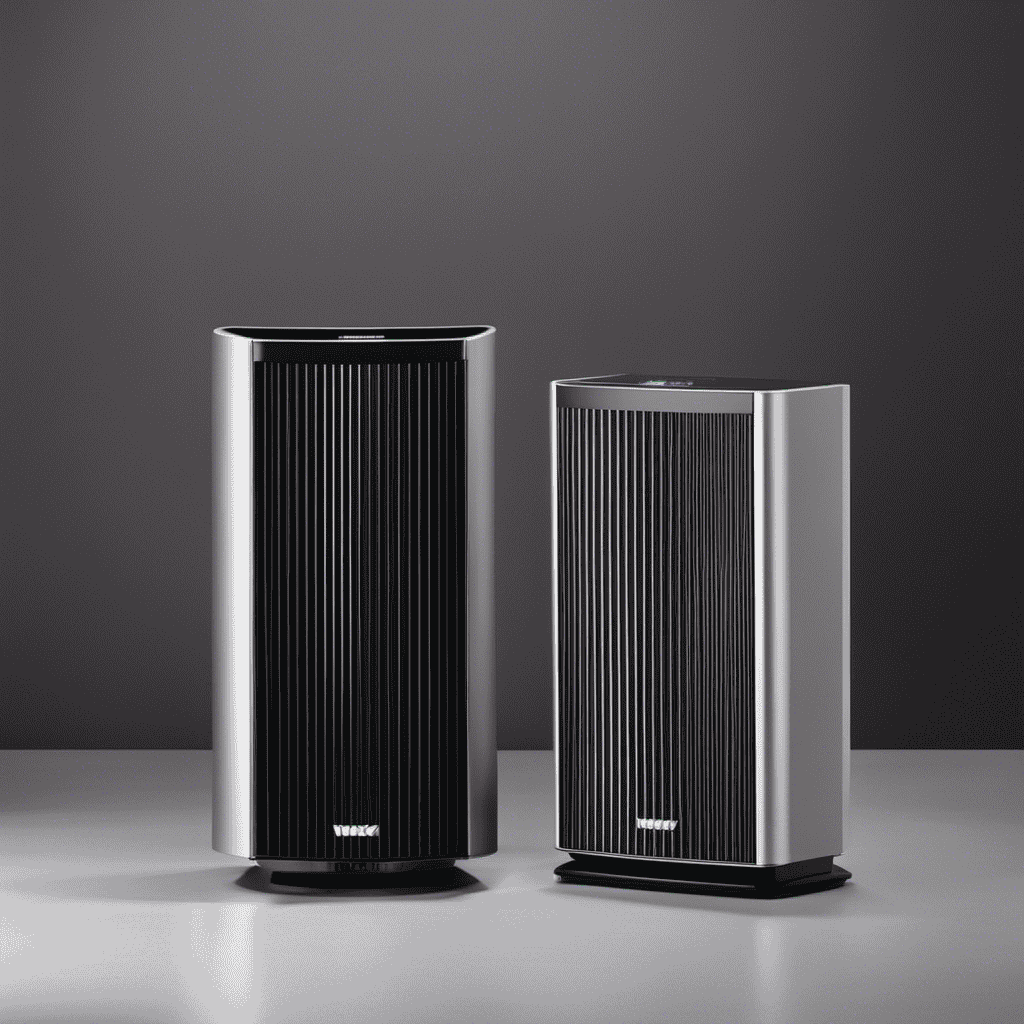Being a homeowner, the quality of air in my home has consistently been a priority for me. This led me to delve into the realm of cold air purifiers.
What exactly are they, you might ask? Well, let me tell you. A cold air purifier is a device that works wonders in improving the air we breathe by removing harmful pollutants and allergens.
In this article, I will delve into how these purifiers work, the benefits they offer, and how to choose the right one for your home.
So, let’s dive in and discover the secrets of these remarkable machines.
Key Takeaways
- Cold air purifiers draw in air and utilize advanced filtration technologies to filter out impurities, including a pre-filter for larger particles and a HEPA filter for smaller particles.
- Using a cold air purifier can result in lower electricity bills and improve overall indoor air quality by effectively capturing and eliminating a wide range of allergens and pollutants.
- When choosing a cold air purifier, consider the size of the space and specific pollutants you want to target, as well as energy efficiency and long-term value through efficient operation and low maintenance requirements.
- Regular maintenance of cold air purifiers includes cleaning or replacing filters, wiping the surface of the purifier, checking for strange odors and loose parts, and cleaning air intake vents to address reduced airflow.
How Does a Cold Air Purifier Work
A cold air purifier works by drawing in air, filtering out impurities, and then releasing clean, purified air back into the room. This process is achieved through a series of advanced filtration technologies.
The first stage typically involves a pre-filter, which captures larger particles like dust and pet dander. Next, the air passes through a HEPA filter, which is designed to trap even smaller particles such as pollen and mold spores. Some cold air purifiers also utilize activated carbon filters, which help to remove odors and harmful gases from the air.
The advantages of cold air purifiers are numerous. They can improve indoor air quality, reduce allergy symptoms, and create a healthier living environment. Understanding the filtration process is crucial in realizing the benefits of using a cold air purifier.
Benefits of Using a Cold Air Purifier
One of the benefits of using a cold air purifier is that it helps to remove pollutants and allergens from the environment. Cold air purifiers are known for their energy efficiency, making them a cost-effective option for maintaining clean indoor air.
Here are some key advantages of using a cold air purifier:
-
Energy Efficient: Cold air purifiers are designed to consume less energy compared to other types of air purifiers, resulting in lower electricity bills.
-
High Effectiveness: Cold air purifiers effectively capture and eliminate a wide range of allergens and pollutants, including dust, pet dander, mold spores, and even volatile organic compounds (VOCs).
-
Improved Indoor Air Quality: By removing harmful particles from the air, cold air purifiers help to improve the overall indoor air quality, reducing the risk of respiratory issues and allergies.
-
Quiet Operation: Cold air purifiers operate quietly, allowing you to enjoy clean air without any disturbance.
-
Long-lasting Filters: The filters used in cold air purifiers are durable and have a longer lifespan, reducing the need for frequent replacements.
Choosing the Right Cold Air Purifier for Your Home
When choosing the right cold air purifier for your home, make sure to consider the size of the space and the specific pollutants you want to target. Energy efficient cold air purifiers are a great choice as they not only help improve indoor air quality but also save on energy costs. Another important factor to consider is cost effectiveness. Look for a purifier that not only fits your budget but also provides long-term value through efficient operation and low maintenance requirements.
To make the decision-making process easier, here is a table comparing different cold air purifiers based on their energy efficiency and cost effectiveness:
| Purifier Model | Energy Efficiency | Cost Effectiveness |
|---|---|---|
| Model A | High | Moderate |
| Model B | Moderate | High |
| Model C | Low | Low |
| Model D | High | High |
| Model E | Moderate | Moderate |
Considering these factors will ensure that you choose a cold air purifier that meets your specific needs and provides optimal performance. Now, let’s move on to the next section where I will share some maintenance tips for cold air purifiers.
Maintenance Tips for Cold Air Purifiers
To keep your purifier running efficiently, make sure to regularly clean or replace the filters and clean the exterior of the device as well. Cleaning techniques play a crucial role in maintaining the performance of your cold air purifier.
Here are some common issues you may encounter and how to address them:
-
Clogged filters: Over time, dust and debris can accumulate in the filters, reducing their effectiveness. Clean or replace the filters according to the manufacturer’s instructions.
-
Dusty exterior: Wipe the surface of the purifier with a soft cloth regularly to remove any dust or dirt.
-
Strange odors: If you notice unpleasant smells coming from your purifier, check the filters and clean them if necessary. Also, consider placing the purifier in a well-ventilated area.
-
Loud noises: If your purifier is making excessive noise, check for loose parts or debris that may be causing the issue. Clean or tighten any loose components.
-
Reduced airflow: If you feel that the airflow from your purifier has decreased, check for blockages in the air intake vents and clean them if necessary.
Regular cleaning and maintenance will ensure that your cold air purifier continues to provide clean and fresh air for your home.
Common Misconceptions About Cold Air Purifiers
Contrary to popular belief, cold air purifiers do not actually lower the temperature in a room. However, they are highly effective in reducing allergies and improving indoor air quality.
Cold air purifiers work by using a combination of filters and ionizers to remove airborne particles, such as dust, pollen, and pet dander. These purifiers can capture particles as small as 0.3 microns, ensuring cleaner air for allergy sufferers.
Compared to other types of air purification methods, cold air purifiers have several advantages. They are more energy-efficient than heat-based purifiers, and they do not produce harmful ozone. Furthermore, cold air purifiers require less maintenance and are often quieter in operation.
Overall, cold air purifiers are a reliable and effective solution for reducing allergies and improving air quality in any indoor space.
Frequently Asked Questions
Can a Cold Air Purifier Help With Allergies and Asthma Symptoms?
Yes, a cold air purifier can help alleviate allergies and asthma symptoms. It filters out allergens and pollutants, improving air quality. Compared to a humidifier, a cold air purifier provides additional benefits by removing harmful particles from the air we breathe at night.
How Often Should I Replace the Filters in a Cold Air Purifier?
To maintain and clean the filters in a cold air purifier, I recommend checking the manufacturer’s instructions. Typically, it is advised to replace the pre-filter every 3 months and the HEPA filter every 6-12 months.
Can a Cold Air Purifier Eliminate Odors From Cooking or Pets?
Certainly! A cold air purifier is an efficient device that can eliminate unpleasant odors caused by cooking or pets. It works by filtering out airborne particles, including cooking smells and pet dander, providing a fresh and clean environment.
Are Cold Air Purifiers Effective in Reducing Mold and Mildew Growth?
Yes, cold air purifiers can effectively reduce mold and mildew growth. Unlike warm air purifiers, they don’t increase humidity levels, which can promote mold growth. Cold air purifiers use various technologies to eliminate mold spores, ensuring a clean and healthy environment.
Can a Cold Air Purifier Help With Reducing Airborne Viruses and Bacteria?
Yes, a cold air purifier can help with reducing airborne viruses and bacteria. It works by filtering out these harmful particles, thus reducing viral transmission and improving indoor air quality.
Conclusion
In conclusion, a cold air purifier is an essential device for maintaining clean and healthy air in your home. By actively removing pollutants and allergens, it ensures a fresh and safe environment for you and your family.
While some may argue that cold air purifiers are unnecessary, it’s important to remember that indoor air can be up to five times more polluted than outdoor air. Investing in a cold air purifier is a wise choice that will greatly improve your indoor air quality and overall well-being.
